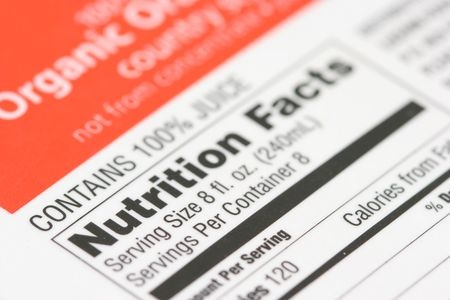How to Decipher the Labels on
Organic Foods

Everyone knows that diet and exercise are the keys to a healthy life. Still, many people assume that low-calorie foods are the way to go. While those may help you lose weight, the healthiest foods are those with high nutritional values.
For this reason, most packaged foods contain nutrition labels, but there’s a new type of label that has produce flying off the shelves: “Organic.” Organic food has become the latest buzzword, but few consumers understand what the term actually represents. So, our team at Organicrestaurants.com decided to write this post to help healthy shoppers become smart shoppers.
What Is “Organic”?
According to the National Organic Program developed by the U.S. Department of Agriculture (USDA), manufacturers have a strict set of rules they must follow if they want to label their products as “organic.” The USDA defines a food as “organic” if it has been produced without any chemicals, pesticides, fertilizers and genetic engineering.
Good Housekeeping Magazine’s Research Institute came up with a number of good tips on how to decipher the labels of organic foods. They include:
- 100 percent organic means just what it says. A product with this label meets all requirements of the National Organic Program.
- Organic products can only be labeled as such if they contain at least 95 percent organic ingredients. The other 5 percent can include non-organic ingredients such as flavoring. However, there is a limited set of ingredients that the USDA has approved for this 5 percent.
- Some items are labeled as Made With Organic Ingredients. To be labeled as such, the produce needs to contain at least 50 percent organic ingredients. If the manufacturer wishes, he or she may give an exact percentage such as “75 percent organic.” The USDA’s Organic Seal cannot be on these labels.
- If the item contains less than 70 percent organic ingredients, it has to be labeled with the exact percentage of organic ingredients inside. For instance, the label could read “made with 60 percent organic ingredients.” In such a case, no reference to the product being organic is permitted.
Labels on Single-Ingredient Foods
The USDA also allows for a small sticker version of its “organic” label to be placed on foods that are single-ingredient items such as fruit and vegetables. You will also find this label on meat, eggs, cheese, milk cartons and other single-ingredient items.
Shopping organic may be a challenge, but finding an organic restaurant near you doesn’t have to be. Organicrestaurants.com provides a directory of eateries that cater to customers who love to eat organic. To find a restaurant near you, visit our Organic Restaurant Search page.
SOURCES
goodhousekeeping.com
ams.usda.gov
organic.org
